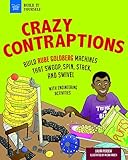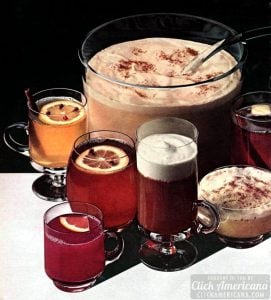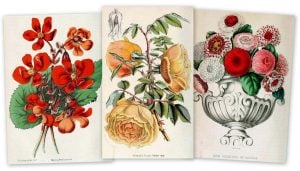Goldberg graduated from the University of California in 1904 with a degree in mining engineering, but he quickly realized he was more interested in art than ore. He took a low-paying job at the San Francisco Chronicle, sweeping floors and sketching cartoons. His break came after a prank from his coworkers nearly derailed his first assignment — so he turned the tables by nailing their desks shut. It worked. He earned their respect and kept his spot in the newsroom, where his drawings started gaining attention.
- Used Book in Good Condition
- Wolfe, Maynard Frank (Author)
- English (Publication Language)
In 1907, Goldberg made the move to New York. He knocked on doors at seven newspapers before he finally landed a job. Over time, he developed a signature style: overcomplicated machines that used ropes, pulleys and levers to complete simple tasks. His characters — like Professor Lucifer Gorgonzola Butts — helped bring these ridiculous machines to life. Whether it was wiping a mouth or lighting a cigar, each task involved a dozen unnecessary steps, all drawn with precise logic and wild imagination.
He didn’t limit himself to gadgets. Goldberg also produced political cartoons, sports drawings and comic strips. But the invention-themed cartoons struck a chord, especially during a time when Americans were adjusting to rapid changes in technology. His work gave people a way to laugh at modern life by exaggerating its quirks and frustrations. These absurd machines were never meant to work — they were meant to entertain, and they did.
- Perdew, Laura (Author)
- English (Publication Language)
- 128 Pages - 10/08/2019 (Publication Date) - Nomad Press (Publisher)
Today, Rube Goldberg’s influence is everywhere, from school science projects to commercials and TV shows. His cartoons inspired generations of thinkers, tinkerers and artists. We’ve gathered a few of his classic cartoons and photos, along with an original article he wrote in 1922 about how it all began. It’s a fun look at the early days of a cartoonist who figured out how to make a career — and a legacy — out of overcomplicating things.
- Hardcover Book
- Aronson, Sarah (Author)
- English (Publication Language)
Rube Goldberg tells how art room crowd tried to haze him
[Original] Editor’s note — We asked RL Goldberg, whose cartoons appear daily in The News, to write something about his career for publication. His story is given below.
by RL Goldberg
I was graduated from the University of California in 1904 after taking a course in mining engineering. I mention this fact merely as a warning to all parents who are thinking of having their sons study mining. Of course, not all students of mining engineering turn out to be cartoonists. Some of them land in the insurance business, while still others became acrobats and bootleggers.
I’ll never forget the first assignment I ever had on a newspaper. It was on the San Francisco Chronicle, where I was drawing down the princely salary of $8 a week — for seven cartoons — very few of which, by the way, the editor considered fit to publish. I spent my spare time sweeping out the office, so the paper did not really lose a large amount of money on me.
But, speaking of my first assignment, the city editor had a young son who was playing football on a prep school team, and I was sent across the Bay to draw some pictures of the game. As the Chronicle was a morning paper my drawings had to be in the engraving department by ten o’clock at night. I knew I would not get back to the office till nearly seven o’clock, which gave me a comparatively short time to get out my masterpiece.

Nervous and timid
Before leaving the office, I placed several hundred pictures of football players in every imaginable pose on my desk to give me the proper inspiration when I returned to make my drawing. I also arranged my pens, ruler and drawing paper in such a way as to waste the least possible amount of time in getting down to business. I was very uncertain in my draughtsmanship, and needed every advantage under which to work. I was as nervous as a poker player down to his last pants’ button, and every one of the hard-boiled old-timers in the art department knew it. I was timid and had hardly spoken a word with any of them.
I went to the game and made notes of everything from the size of the cheerleader’s megaphone to the number of holes in the fullbacks’ stocking. I rushed back to the office with just enough time left to turn out a drawing, provided everything broke right for me.
When I got there, I found my desk cleared of everything. I tried desperately to open the drawer and found it nailed up tight.
It dawned on me what had happened. The members of the art department had played a practical joke. They knew how uncertain I was of myself and that I would be absolutely helpless without my paraphernalia. They were right. To me, the end of the world had come.
I was almost licked, but a sudden inspiration seized me. I went down to the mechanical department, got a hammer and all the nails I could get my hands on, came back and nailed up every one of the eight desks in the room. Luckily, all the artists were out to dinner and I could make a good job of it. I jimmied open my own desk, put on my hat and went out to eat.
Went back to die
 After dinner I knew I had nothing to live for, so I walked right back into the art room to get shot. Of course, I wasn’t shot, or I wouldn’t be writing this. Every artist was as meek as a lamb. I had handed them back their own medicine and they were cured.
After dinner I knew I had nothing to live for, so I walked right back into the art room to get shot. Of course, I wasn’t shot, or I wouldn’t be writing this. Every artist was as meek as a lamb. I had handed them back their own medicine and they were cured.
Somehow, I got out my drawing and the city editor liked it — possibly because his son was pictured very prominently. From that time on, I was accepted as one of the gang, and I spent some of the happiest moments of my life in that room during the next year. They were a fine bunch of fellows.
Which, in a measure, teaches that it is also a good idea to speak well of your boss’s son.
I came to New York in 1907, the year after the big fire and earthquake in San Francisco. I had heard many tales about young men being discovered in smaller towns by New York publishers and brought east at enormous salaries. Of course I had hopes while working San Francisco of being one of the discoveries myself, but somehow my reputation remained entirely local.
After a reasonable wait, I realized that New York was apt to make a great mistake of not even finding out that I was alive unless I brought that fact forcibly to the attention of the metropolis described by tear-jerking song-writers as “the city where nobody cares.” I had visions of myself being sent for when I was about ninety and too old and shaky to shave myself on a Pullman. So I bought some heavy underwear, said goodbye to the seals at the Cliff House, and came to New York without having the slightest idea upon which part of my anatomy I would eventually land.
Shown out a-plenty
I recall with a feeling of pride that I was shown out of seven newspaper offices before I landed a job on the Evening Mail. One of the chief requirements for admission to the city is to be able to stand a lot of good swift kicking. After taking my full share from seven newspapers, I felt that I had laid the foundation for a career.
I was also shown out of the Mail office the first time I appeared there looking for work. But I was then at such a kickable stage from constant training that I hardly noticed the first experience, and came back the next day for more. I think the sporting editor was sore at the managing editor, and he took me on as a sporting cartoonist to play a mean joke on the paper. Anyway, they’re still using my stuff after fifteen years, and the joke seems to be on the sporting editor.
Six years ago, I realized there was something else in life besides cartoons — we have two fine boys and there’s plenty of room for the family, the cartoons and everything.
Rube Goldberg’s famous “Self-operating Napkin”

Rube Goldberg’s “Latest War Machine!” (1942)

Don’t Waste Gas! says Rube Goldberg (for Pennzoil, 1943)

“Cooling Device for Busy Office-Worker” comic (1951)

Rube Goldberg kits you can buy today for kids & adults
- A KICKSTARTER SUPERSTAR - This patented marble racetrack is the most backed Kickstarter magnetic super puzzle of all time! Each track and trick has its own unique properties - just move them around to...
- DESIGN, BUILD, TEST, CREATE - This wildly creative super puzzle includes 42 tracks & connectors, 17 trick pieces & 15 marbles for infinite building combinations and endless amounts of creative fun!
- BUILD ANYWHERE MAGNETS STICK - This STEM marble maze for kids and adults can be built on any vertical magnetic surface like the fridge, lockers, whiteboards, workbenches & more!
- MOTORIZED LIFT FOR ENDLESS RUNS - This marble run features a motorized lift that can carry your marbles up 16" and drop them onto the track! Create a perpetual motion machine that continuously takes...
- 150-PIECE KIT FOR MASSIVE MAZES - With 106 construction pieces, 30 marbles, and the 14-piece spiral lift, you get everything you need to create endless configurations of marble runs! A storage bag is...
- COMPATIBLE WITH NATIONAL GEOGRAPHIC MARBLE RUNS - Expand any National Geographic Glow-in-the-Dark Marble Run with this kit! All pieces, including the spiral lift, work seamlessly with existing sets...
- 𝐓𝐎𝐘𝐒 𝟑 𝐘𝐄𝐀𝐑𝐒 𝐀𝐍𝐃 𝐎𝐋𝐃𝐄𝐑 – The set consists of a total of 200 parts. With 24 different blocks, such as two bells, a sound staircase and much more....
- 𝐇𝐈𝐆𝐇 𝐐𝐔𝐀𝐋𝐈𝐓𝐘 𝐌𝐀𝐓𝐄𝐑𝐈𝐀𝐋 – The building blocks / marble run are made of wood. The material is high quality, because only beech wood was used, so...
- 𝐏𝐋𝐀𝐘𝐈𝐍𝐆 & 𝐋𝐄𝐀𝐑𝐍𝐈𝐍𝐆 – The wooden toy is interesting for children even at an older age due to the learning factor in combination with the playful aspect....
- Innovative: Design your own vertical marble runs with this specially designed system of flexible tracks that does not require any support structures, allowing you to build higher with fewer pieces.
- Intuitive & Mess-free: Tracks attach to smooth surfaces with the help of clever nano-adhesive pads that create a strong but temporary bond; the pads are not glue-based and can be quickly and easily...
- Open-ended & Educational: Combine different configurations and environments for endless possibilities; develop engineering and problem-solving skills and see physics in action.
- New wooden marble run!Build it with 294 pieces and 10 marbles.The end result is pretty cool.It has a crank that uses large gears to move marbles up to the top of the machine where they roll down into...
- Different from other wood puzzles,black-grey appearance,metal nameplate and acrylic pieces to make the finished product more visually interesting and allowing the balls to be seen in action more.
- Great instruction booklet with big and detailed pictures makes it easy to identify the parts and makes the instruction clear.There is one spare parts sheet in case you broke critical pieces during...
- A KICKSTARTER SUPERSTAR - This patented marble racetrack is the most backed Kickstarter magnetic super puzzle of all time! Each track and trick has its own unique properties—just move them around to...
- DESIGN, BUILD, TEST, CREATE - This wildly creative super puzzle includes a motorized marble lift, 70 tracks & connectors, 32 trick pieces, 25 marbles and more for infinite building combinations and...
- BUILD ANYWHERE MAGNETS STICK - This STEM marble maze for kids and adults can be built on any vertical magnetic surface like the fridge, lockers, whiteboards, workbenches & more!
- MOTORIZED LIFT FOR ENDLESS RUNS - This marble run features a motorized lift that can carry your marbles up 16 and drop them onto the track Create a perpetual motion machine that continuously takes...
- 95-PIECE KIT FOR MASSIVE MAZES - With 61 construction pieces, 20 marbles, and the 14-piece spiral lift, you get everything you need to create endless configurations of marble runs A storage bag is...
- COMPATIBLE WITH NATIONAL GEOGRAPHIC MARBLE RUNS - Expand any National Geographic Glow-in-the-Dark Marble Run with this kit! All pieces, including the spiral lift, work seamlessly with existing sets...
- 【Glowing In Dark Marbles Inside Add More Fun for An Amazing Marble Games】Meland 2024 NEW Launched Marble Run Set comes with 102 translucent building pieces, 20pcs normal glass marbles and 10pcs...
- 【Stimulates Creativity, Promotes Patience & Develops Self-Confidence】Lots of marble toy kits and ways of building opportunities perfect for improving hand-eye coordination, problem- solving skills...
- 【Ensure Kids' Safety and Free up Parents' Time.】Made of child-friendly ABS material, smooth edges avoid scratching hands. Keeps children entertained for hours and gives parents time.
- DEVELOPS KEY SKILLS: Smartivity build your own full functional Pinball Machine - reduces screen time and boosts confidence and creativity with 100% screen-free engagement.
- ACTION-PACKED FUN TIME: Bring the Arcade home with this exciting mechanical Pinball Machine. Our step-by-step instructional manual ensures a deeply engaging experience, perfect for kids to construct...
- FREE PARTS LIFETIME: Enjoy hassle free fun with all parts included, plus a lifetime supply of replacement parts. Easy-to-follow instructions make building a breeze, ensuring uninterrupted playtime.
- 500+ PIECES – This epic building set comes with over 500 pieces, including 3 accordion tubes, a see-saw marble scoop, and a bankshot bounce pad that will really add some WOW to your coaster!
- MOTORIZED MOVEMENTS – Experience the excitement of watching your Marble Coaster Run come to life with the battery-powered motor that keeps the fun going!
- STEAM LEARNING FUN – Building with K'NEX helps strengthen fine motor skills, manual dexterity, and spatial relations. Both exciting and educational, K'NEX can help children learn basic principles of...































